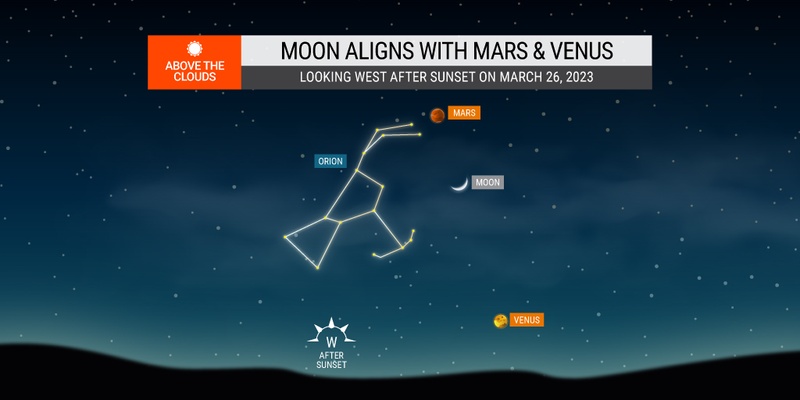
Heavy Rain, Flooding, and Chance of Severe Weather Staring Down the Southern U.S.
January 22, 2024
Posted: March 6, 2023 10:40 am





February brought a number of celestial wonders to the night sky. In addition to the rare green comet that spent time flying near Earth, the skies also featured a few cool planetary alignments that brought stargazers out into the cold night to check these sights out with their own eyes. March is setting up to be another fun month to head outside after the sun goes down to see what you can observe.
As always, your viewing pleasure will depend on the weather conditions in your area. Although the mercury starts to creep upward during the transitional month of March, it is also one of the most cloudy months of the year. These cloudy conditions greatly impede viewing opportunities. This makes it important to check the local forecast and find nights when the conditions are predicted to be clear before bundling up and heading out.
Here are the highlights of what you can expect to find in the March night skies given the right conditions.
The last full moon of the astronomical winter will make an appearance on Tuesday, March 7. This full moon is most often known as the Worm Moon. It gets this moniker from the Old Farmer’s Almanac detailing that this is the time of the year that earthworms begin to come up from the soil. The term “worms” may also be used to signal the larvae that come out of hibernation after the cold winter.
Other names for this full moon include the Sugar Moon, the Eagle Moon, the Snow Crust Moon, and the Goose Moon. The moon will be easy to spot because of its brightness and large size. The next full moon will not rise in the sky until Thursday, April 6.
The equinox marks the official changing of the seasons. For those in the Northern Hemisphere, the date March 20 ushers in the beginning of spring and the end to winter. Conversely, the March equinox ushers in the start of astronomical autumn for those in the Southern Hemisphere.
Most people equate this date with longer days and shorter nights. On this date, the sun’s most direct rays are trained on the equator, translating to an equal amount of daylight and darkness across most every corner of the planet.
The official start of the equinox is 5:24 pm EDT. The equinox is different from the meteorological spring, a date that always falls on March 1.
You are not going to want to miss heading outside at night over the last weekend of March. This is when you will find the rare sight of the moon lining up with both Mars and Venus. This event will be similar to what happened at end of February when the moon was in alignment with Jupiter and Venus.
You will need cloud-free conditions to spot the trio in the sky on Sunday, March 26. Head outside after sunset and look for the crescent moon shimmering in place between Mars and Venus. The show will be visible after nightfall on Monday and Tuesday as well. Be sure to also try to spot the famous constellation Orion glowing in the western sky near these planets.
In other astronomy news, officials in Hidalgo County, Texas confirmed that a blast heard last month was indeed a meteorite strike. The sudden and loud explosion startled residents in the early evening hours of February 15. The blast was heard near the city of Mission located in the Lower Rio Grande Valley.
Authorities said that a meteor struck at about 5:28 pm local time, at about the same time that two pilots operating aircraft near Houston reported an alleged meteor. NASA said that they believe the meteoroid measured about two feet in diameter as it zoomed near the area.
The sighting was also confirmed by the National Weather Service (NWS) in Brownsville, Texas. The NWS said that a specially designed satellite system detected the meteor during a time when there were no storms in the region.
Did you find this content useful? Feel free to bookmark or to post to your timeline for reference later.

January 21, 2024

January 19, 2024

January 18, 2024